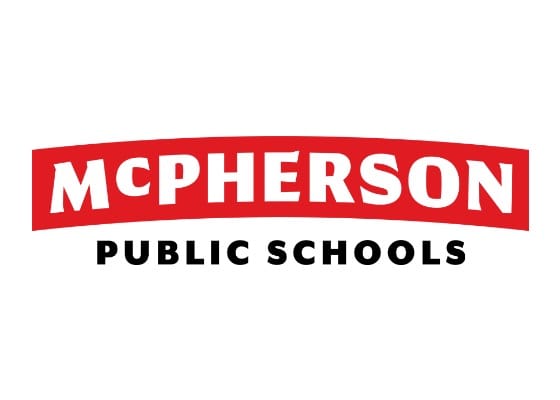6 takeaways from USD 418 school board meeting
September 8 2025

1. Board Deadlocks on Roundhouse Flood Repairs; Tables Action After Split Votes
The USD 418 Board of Education reached a stalemate Monday night regarding the path forward for the flood-damaged Roundhouse gymnasium, ultimately tabling the issue after a lengthy debate resulted in multiple failed votes. The high school gym has been unusable since sustaining damage during historic rainfall in June—characterized at the meeting as a 200-year flood event—and subsequent flooding in July. The board had previously paused a $278,500 floor replacement to seek engineering solutions.
The contention centered on risk management versus educational continuity. Some members argued it was fiscally irresponsible to install a new floor before long-term flood mitigation (estimated at $50,000 to $80,000, including temporary measures) was complete. Others pushed for immediate action to restore the facility for classes and athletics, which have been significantly disrupted. A motion to approve the full package failed on a 2-3 vote. Subsequent motions to approve the mitigation work alone, or just the preliminary concrete work, also failed 2-3 among the five members present. Due to the impasse, the board voted 5-0 to table the discussion until the next meeting.
2. District Faces Nearly $50 Million in Deferred Maintenance
A comprehensive facility assessment presented by Incite Design Studio (iDS) estimated the district’s total deferred maintenance backlog at close to $50 million. This figure represents the cost to bring all existing buildings back to their original, new condition, but does not include costs for modernization or functional improvements. The bulk of the costs are concentrated in the secondary schools. McPherson High School (MHS) requires an estimated $15 million in maintenance, while the Middle School requires approximately $13.8 million. The district’s four elementary schools combined account for an estimated $10 to $12 million in needed infrastructure upgrades. This backlog underscores the financial challenges facing the district as it begins long-range planning.
3. Facilities Assessment Reveals Widespread Deficiencies; Most Schools Graded ‘C’
The district-wide assessment revealed that facility needs are spread across all campuses, with most educational buildings receiving a ‘C’ grade from Incite Design Studio (iDS). The assessment evaluated facility condition, educational adequacy, and safety. Architects emphasized that these grades reflect the physical condition of the facilities, not academic performance. While staff surveys indicated a positive culture within the buildings, the physical environments were frequently cited as a struggle. Common issues identified included aging HVAC systems, the need for flooring replacements, ADA accessibility challenges, and site constraints related to parking and traffic flow. The report is the first step in a process aimed at addressing these systemic issues, potentially leading to a bond issue proposal next spring.
4. Middle School Identified as Strongest Candidate for Replacement
While MHS requires a slightly higher investment in immediate repairs, McPherson Middle School was identified in the facility assessment as the building potentially closest to needing replacement based on financial metrics. The Middle School’s $13.8 million deferred maintenance cost represents a high percentage of its total replacement value—a metric known as the Facility Condition Index (FCI). Consultants noted the aging building struggles with ADA accessibility, outdated gymnasium and auditorium spaces, and inefficient HVAC systems. The assessment also noted the site lacks adequate outdoor space for activities like a track.
5. High School Plagued by Structural Issues and High Maintenance Costs
The facility assessment highlighted significant underlying issues at McPherson High School. The architectural team noted “concerning” structural issues, including “a lot of settlement and a lot of open gaps in the walls” on the west side of the building. Furthermore, district maintenance staff confirmed MHS is the most challenging facility to maintain, requiring daily attention. Described by Duane Cash of Incite Design Studio (iDS) as “death by a thousand cuts,” the building suffers from disjointed HVAC systems described as a “Frankenstein” setup, electrical challenges, and ongoing water drainage issues, leading to high operational costs and frequent repairs.
6. Declining Enrollment Prompts Discussion on Efficiency and Consolidation
Enrollment data presented during the work session showed USD 418 enrollment has declined by an average of 1.5% annually over the last nine years, leading to an overall district utilization rate of 68.8%. While the decline is projected to slow, the shifts are creating imbalances. Eisenhower and Lincoln Elementary schools are currently underutilized and drifting into “inefficient” ranges. Conversely, Roosevelt Elementary is projected to reach 93% utilization in five years. This disparity prompted discussion about long-term strategies, including potential boundary changes, reorganizing into grade-level centers, or the possibility of consolidating the four elementary schools into three to optimize staffing and resources.
Sponsors (click me!)





Found a mistake? Have a news tip or feedback to share? Contact our newsroom using the button below:
citizen journal offers three flagship products: a daily national news summary, a daily Kansas news summary, and local news and school board summaries from 12 cities across Kansas. Each issue contains 5 paragraph-length stories that are made to be read in 5 minutes. Use the links in the header to navigate to national, kansas, and local coverage. Subscribe to each, some, or all to get an email when new issues are published for FREE!

